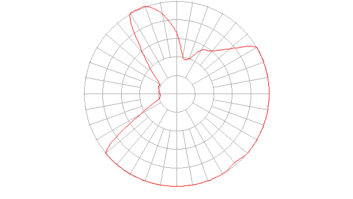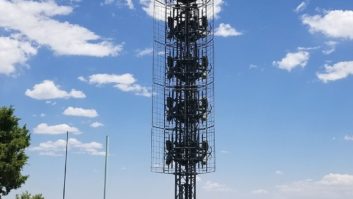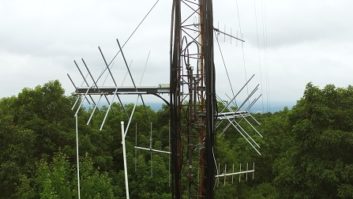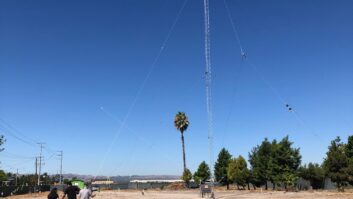When does an omni antenna become a DA?
Feb 1, 2009 12:00 PM, By Harry Martin
In a recently-filed petition against an FM station modification, an issue was raised as to whether a proposed omnidirectional antenna should be treated as directional due to pattern distortion resulting from tower mounting and compensating antenna design features.
In support of its claims, the petitioner cited a public notice released in September 1984, entitled �Criteria for Licensing of FM Broadcast Antenna Systems.� According to that notice, the Commission assumes that omnidirectional FM antennas have perfectly circular horizontal radiation patterns. The notice then warns that the �use of any technique or means (including side mounting) which intentionally distorts the radiation pattern of what is nominally a non-directional antenna makes that antenna directional and it must be licensed as such.� Of course, the licensing process tends to be considerably more complicated and expensive for a directional than an omni, so it would likely be a serious matter for a broadcaster planning on installing an omni to find that the FCC will be treating it as a directional.
It appears that the 1984 notice has been cited by the FCC only twice in the last 25 years � and not at all since 1992. The Commission does not seem to have even suggested, much less formally held, that the public notice could or should be invoked with respect to standard omni installations, whether the antenna is to be top-mounted or side-mounted. Despite the fact that thousands of omni antennas have been proposed, installed and licensed since 1984, none of them has been declared a de facto directional under the public notice.
Nevertheless, in the recent case before the Audio Division, the petitioner argued that the antenna should be considered a DA. In support, the petitioner relied largely on claims by the antenna manufacturer that suggested that its specially-designed-and-mounted �lambda� design would effectively directionalize the station’s pattern. According to the manufacturer’s website, the performance of most omni antennas is determined by free space evaluation, meaning the evaluation is made as though the antenna were magically suspended in space (i.e., far away from the proposed supporting tower, that might otherwise distort the antenna’s pattern). But since, as a matter of physics, close proximity to a large metal object such as a broadcast tower will invariably alter the antenna’s performance in various ways, the theoretical omni pattern will be subject to distortion as soon as it gets mounted in the real world. Accordingly, the manufacturer devised the lambda system to take into account the distortive effects of the tower and mounting hardware (and other factors) and produce a more accurately predictable signal.
So yes, the lambda system intentionally affects an omni signal in some sense, but only for the purpose of counteracting the unintended distortion that naturally occurs when the antenna is affixed to a tower. If the goal is to correct unintended-but-unavoidable natural distortion, can that really be said to be intentional distortion within the meaning of the 1984 public notice?
The Commission’s staff accepted the applicant’s, and the manufacturer’s, explanations and granted the application. The upshot of the decision is a clear message that the FCC’s engineering staff recognizes that mounting an omni on a tower will always cause some distortion, and it simply does not want to study each and every new or old omni pattern to check on distortion levels. The decision could have been more helpful, however, by providing broadcasters, equipment manufacturers and tower riggers with clear guidance as to just what the 1984 notice means, and, if it is still a valid statement of policy, what levels of distortion will be accepted in future cases.
Dateline
April 1 is the deadline for submission of biennial ownership reports by radio stations in Texas.
April 1 is the deadline for radio stations in Texas with more than 10 full-time employees to electronically file their Broadcast EEO Mid-Term Reports (Form 397) with the FCC.
April 1 is the deadline for radio stations licensed in the following states to place their annual EEO Reports in their public files: Delaware, Indiana, Kentucky, Pennsylvania, Tennessee and Texas.
Martin is a member of Fletcher, Heald & Hildreth, PLC, Arlington, VA. E-mail:[email protected]







